Is Going Solar Right for You?
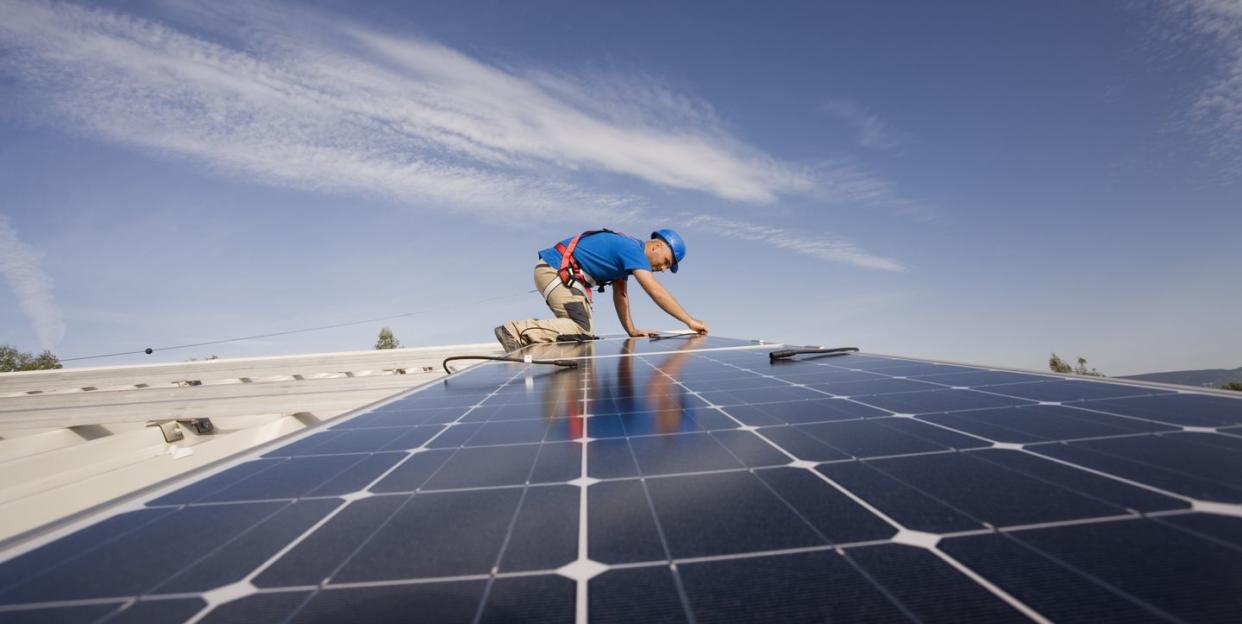
"Hearst Magazines and Yahoo may earn commission or revenue on some items through these links."
As the price of electricity continues to rise, homeowners are looking for ways to cut energy costs without sacrificing comfort or convenience. And many cost-conscience homeowners are considering solar panels, which convert the sun’s energy into clean electricity.
Solar-powered systems have come a long way in the past decade or so. They’re much more powerful and sensitive, so they’ll work in virtually any region—not just the Sunbelt. The widespread availability and popularity of solar panels has also driven the price down, and when state and federal rebates are applied, the systems start entering the realm of affordability.
But, how do you know if solar panels are right for your home? And what about those sales pitches that offer free solar systems?
There’s a lot to consider before making a decision. So, here’s some detailed information, including a list of the main benefits and drawbacks to solar panels. Hopefully this will help you make the smartest decision for your home and family.
Why Go Solar?
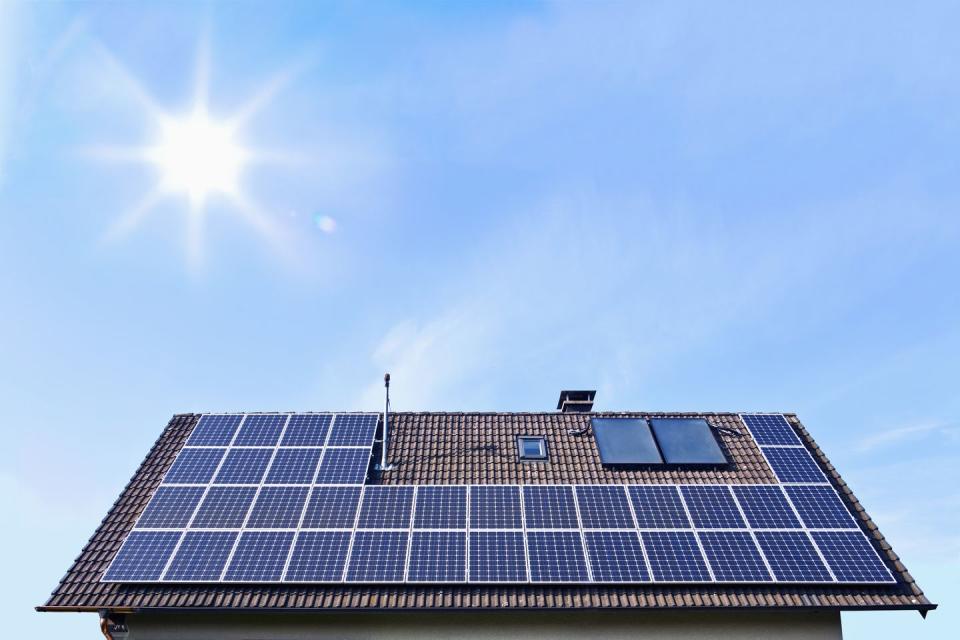
First off, it's worth examining what the benefits are when opting for solar power. Here are the four main reasons to consider a solar-powered system for your home:
Reduce energy costs—Not surprisingly the number one reason why most people install photovoltaic (PV) solar panels is to slash their electric bill. And depending on where you live and the size of your home, these savings can be significant. In some cases, homeowners have saved several hundreds dollars per month on their electric bill.
However, keep in mind that solar systems are modular and custom-designed, so you can install as many or as few panels as you’d like. The more panels installed, the more electricity you can produce, and the more money you can save. And your savings will continue into the future because electric rates are sure to rise, but the sun’s energy will always be free.
Generate income—When the solar system and climatic conditions are ideal, you can actually produce more electricity than you use. And in those situations, the utility company will buy back any excess electricity, so you’re not only saving but actually making money each month.
Help the environment—Another popular reason for installing solar panels is to cut greenhouse gases and reduce our carbon footprint on the planet. Solar energy is clean energy and requires no burning of oil, coal, or any other fuel.
Increase home value—An ancillary benefit of solar panels is that they can increase the resale value of your home. Now it’s difficult to say how much more your house is worth with a solar system, since so much depends on the home size, condition, location, and other real-estate issues. But, you can typically expect an increase of $5,000 to $6,000 for each kilowatt (kW) of solar installed.
In other words, a 4-kW solar system can potentially raise your home’s resale value between $20,000 and $24,000. However, if there’s a chance that you may move in four or five years, check with a local Realtor before installing solar panels, just to confirm that you’ll be able recoup your investment.
More: The Best RV Solar Panels of 2023
So...Is Solar Right For You?
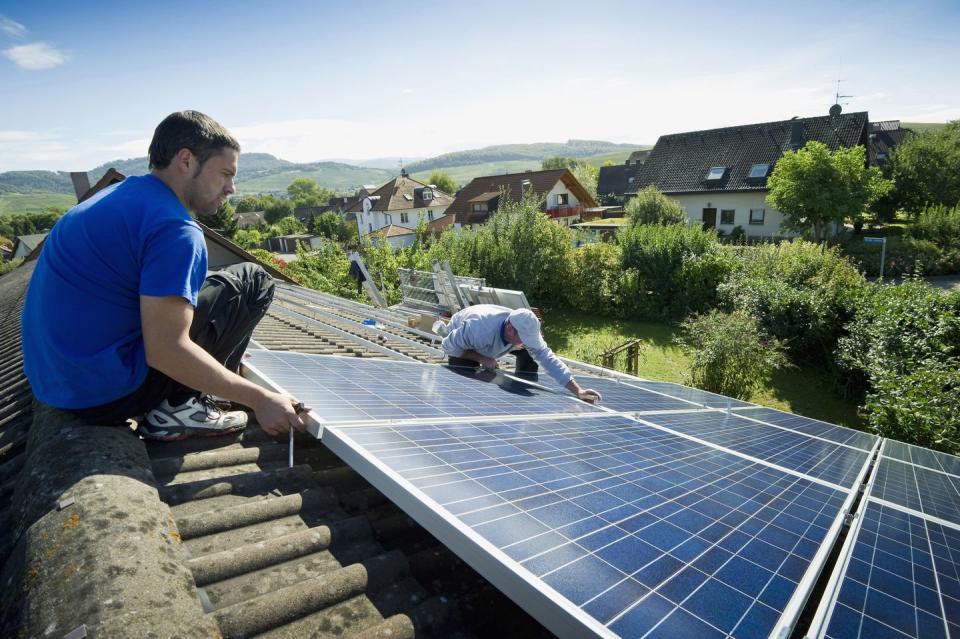
There are several very valid reasons to install solar panels, but that doesn’t mean they’re right for every home. Here are a few important things to keep in mind when contemplating going solar:
Sun exposure—The sunnier the climate, the more electricity a solar system can produce, but that doesn’t mean you must live in Arizona or California. Today’s ultra-sophisticated solar panels are super-sensitive to light and can produce electricity in every state. The amount of electricity each solar cell produces is based on the amount of sun exposure, regardless of whether it’s in Hawaii or Maine.
Now, with that said, regions with the most sunny days per year will obviously produce more electricity than less sunny regions, so contact your state’s Department of Energy or a local solar installer for specific sun-exposure information or check to see if Google's Project Sunroof has information on solar availability for your home or your area.
Roof orientation— For optimum efficiency, it’s best to install solar panels on roof planes that face due south or west. If the roof of your home faces in some other direction, you can still install a solar system, but it won’t produce as much electricity as a south- or west-facing roof.
In such cases, slanted standoff bases can be installed to raise and angle the panels more toward the sun. And, of course, the roof mustn’t be shaded by leafy trees, tall buildings or any other sun-blocking obstruction.
Roofing type—Solar systems are best installed over asphalt shingles or even wood shingles. Both types are easy to drill and screw into and to patch and repair. Solar installations are much more difficult on roofs covered with metal, concrete tile, or clay tile.
Roof condition—If your roof is more than 15 years old, it’s recommend that you replace it prior to installing solar panels. That’s because putting on a new roof after installing solar panels would require removing and reinstalling the panels, which would be costly.
Payback period—Solar might not be right for your home if your current monthly electric bills are relatively low, say, less than $100 per month. It just wouldn’t make economic sense, assuming you own—and don’t lease—the solar panels. The payback period to recoup the cost of the system would simply take too long.
However, if your main reason to install solar is to cut pollution, not save money, then solar would make personal sense.
Aesthetics—It's true solar panels aren't the most highly designed piece of technology and might clash with your exterior design. Luckily, companies like Tesla, are designing solar shingles that are nearly indistinguishable from normal shingles, embedding solar in a less obtrusive way. You can go here to see if this option makes sense for you.
Affording Solar
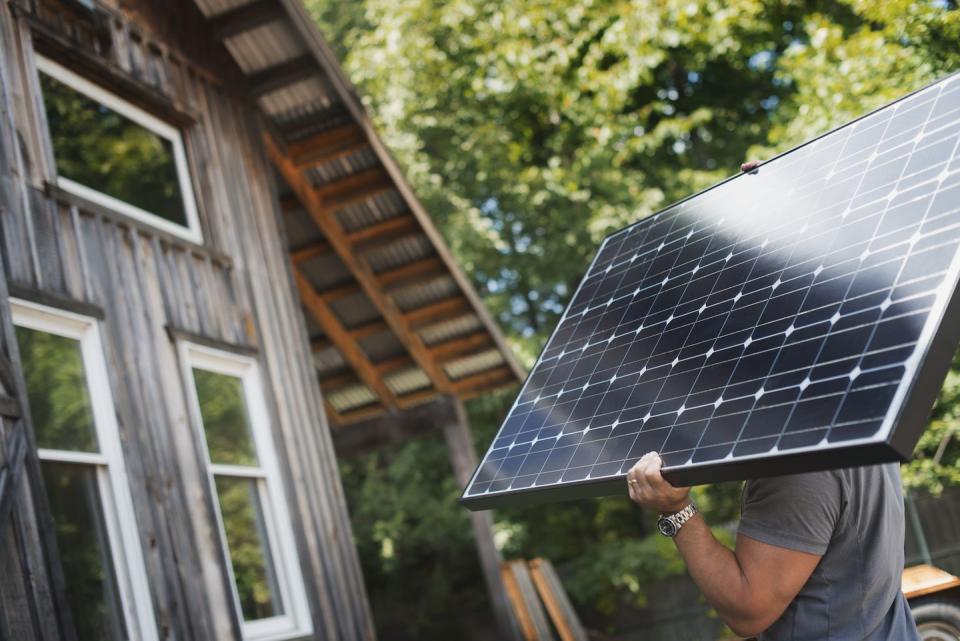
When residential solar systems were first introduced they were prohibitively expensive, and way out of the reach of the average homeowner. But that’s all changed thanks to high demand, fierce competition, offshore production, and tax credits and rebates. In fact, the price of solar panels has dropped more than 50 percent just since 2008, and is more than 100 times less expensive than in 1977. And the cost of PV solar systems is expected to continue to drop in the foreseeable future, putting it well within the reach of more and more homeowners. Here’s a brief look at three solar options:
DIY Solar—Believe it or not, there are DIY systems available for homeowners who want to install their own PV roof panels. Manufacturers sell kits that contain all the necessary parts, including roof panels, electrical cables and connections, hardware, fasteners, and detailed instructions.
These DIY systems are certainly the most affordable option, but are bit tricky to install. Not to mention you must climb up and down ladders and scramble all across your roof, something I don’t usually recommend for the average DIYer.
Each system is designed and specified by the manufacturer to accommodate your specific home, so it’s difficult to say how much it might cost. But, if you’re interested in a DIY solar kit, the manufacturer will quote a price after designing the system.
Solar Leasing—You’ve probably seen TV ads or received mailings from companies offering free solar systems. And, although it sounds too good to be true, the systems actually are totally free, including the solar panels and installation. So what’s the catch? These deals are known as Power Purchase Arrangements (PPA), and here’s how they work:
A third party hires the installation crew and covers the cost of the solar system. It then charges you only for the solar energy produced by the system. The rate is locked in for a specific period of time, and is typically much lower than what you’re currently paying the utility company. The key benefit, as mentioned earlier, is that you pay nothing for installation or maintenance. However, you also don’t qualify for any tax credits or rebates; those go directly to the leasing company.
Outright Ownership—As solar panels have become less expensive, more homeowners are opting to purchase the systems, rather than lease them. With outright ownership, you receive 100 percent of the solar energy produced by the system, and you qualify for all state and federal tax credits, rebates and incentives.
The downside is that you must pay for the entire system, including the panels, installation and maintenance. However, it is possible to recoup the cost within a few years through lower electric bills, and even sooner if the system produces an excess of electricity that can be sold back to the utility company.
Price
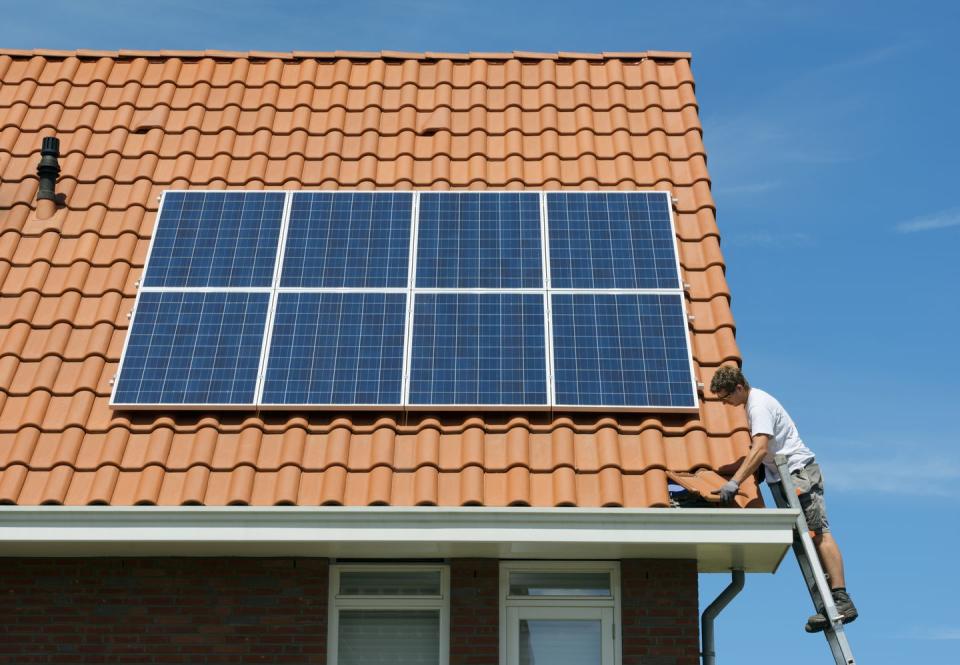
By now you’re probably wondering how much it costs to purchase a PV solar system. Well, that’s tough to say since there are so many variables, including the electrical demands of your home, complexity of the installation, state in which you live, and available tax credits and rebates.
However, the average installed cost of a residential, rooftop PV solar system is approximately $4 to $6 per Watt, meaning a 5-kW (5,000 Watts) system costs between $20,000 and $30,000. Now, before you faint, it’s important to realize that tax credits and rebates typically slash the final cost by about 50 percent. Hopefully that will put solar panels—and the sun’s energy—comfortably within your grasp.
You Might Also Like

